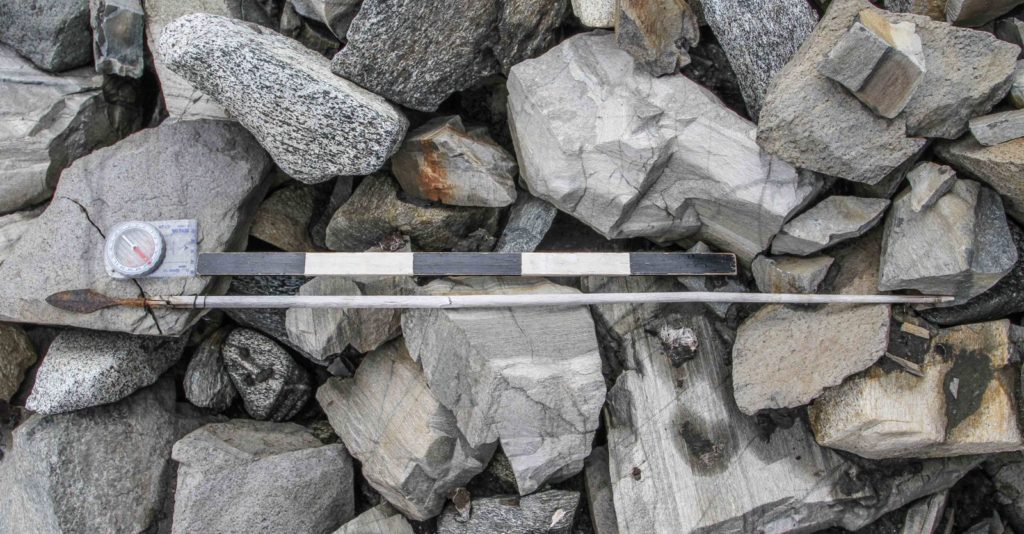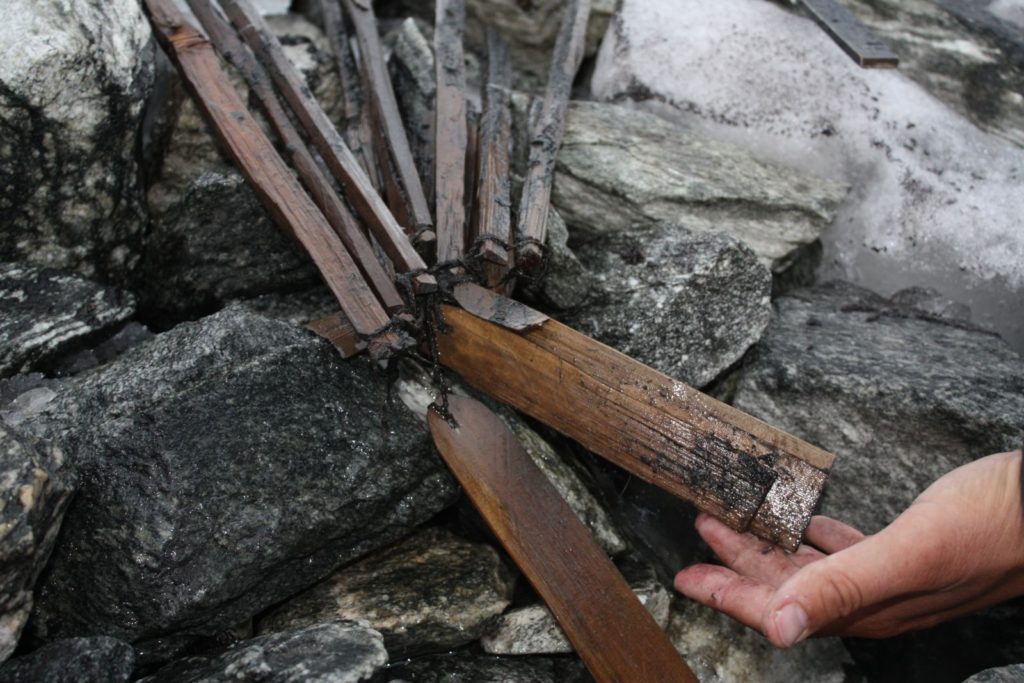The hunting finds from Oppland consist of four artefact groups: arrows, bows, a spear and so-called scaring sticks.
The oldest arrows so far date back to 4000-3700 BC, which is the Early Neolithic here in Norway. About 150 arrows have been recovered. Their preservation varies a lot, depending on how long time they have been out of the ice. The best-preserved arrows still have arrowhead, sinew, tar and fletching attached to the wooden arrow shaft.
The arrows from Oppland follow the same typological development as the arrows from the Oppdal mountains. You can read about the Oppdal Arrows here (Neolithic), here (Bronze Age) og here (Iron Age/Medieval).

Bows are a rare find and are mostly in fragments, probably because they broke during the hunt, and were discarded. We have found one complete bow – 3300 years old and made of elm.
A rare find of a Viking Age spear, complete with the shaft, may also be related to hunting. However, the spear was found at Lendbreen, and this site is also a mountain pass, not just a hunting site. If used during hunting, spears would not be lost in the snow as frequently as arrows.

The most common finds from the ice in Oppland are scaring sticks. These are wooden sticks, usually one metre long, with an object attached to the top that would move in the wind. The reindeer try to avoid moving objects, as they perceive them as presenting possible danger. Such sticks were placed in rows to lead the approaching reindeer towards hiding hunters. More than a thousand scaring sticks have been recovered from the ice.
